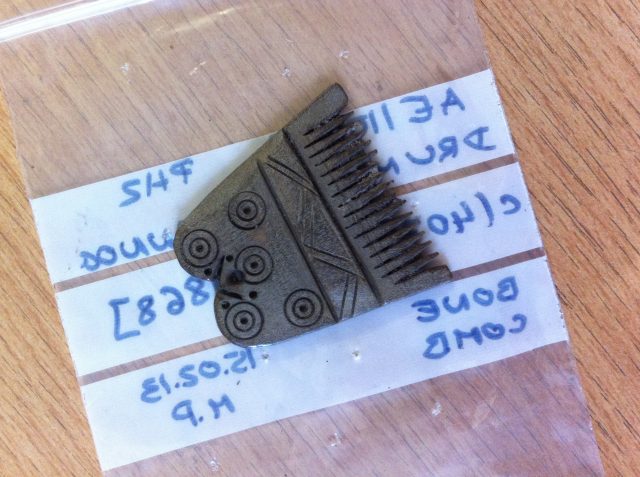During the last mandate, it was estimated that almost 1.5 million objects from archaeological sites in Northern Ireland lie in temporary storage, uncurated and inaccessible to the public. What lies in store for these objects, and could the bringing together of policy teams for museums and the historic environment in the new Department for Communities represent an opportunity to leverage public benefit from this resource?

Around 200 licensed archaeological excavations are carried out each year in Northern Ireland; the majority conducted as part of the planning process as a result of conditions set by the local planning authority. Some of these will take just a few days to complete, while others, such as the excavation of the early medieval crannóg at Drumclay on the outskirts of Enniskillen, can take many months. Such projects generate an archive of documents, photographs and digital files; artefacts such as pottery, glass and leather; as well as scientific samples. This work is usually carried out by commercial archaeological contractors, previously licensed by the Northern Ireland Environment Agency (NIEA) but now the Department for Communities, who conduct and record excavations on behalf of the developer.
The developer who owns the land will generally, under Northern Ireland law, also own the archaeological objects (in contrast to Scotland and the Republic of Ireland where such antiquities belong to the state). However, once an excavation has been completed and construction work commences, developers rarely have an interest in taking home their archaeological archive. After all, the vast majority of the objects recovered have no monetary value. But heritage groups and archaeologists assert that such archives contain objects and information which have a value through the stories they can relate to the public about the past. The problem lies in what to do with all these objects and how to get those stories out of the cardboard boxes in which they lie, sometimes for decades.
Finding a place for the past
Northern Ireland is not the only jurisdiction to grapple with the difficulty of finding a location to store archaeological archives in the long-term. The Council of Europe Convention on the Protection of the Archaeological Heritage, ratified by the UK in 2000, states in Article 4 that,
…each party undertakes to implement measures for the physical protection of the archaeological heritage, making provision… for appropriate storage places for archaeological remains which have been removed from their original location.
Legislation here states that any archaeological finds should be reported to National Museums Northern Ireland, the Department (previously Environment but now Communities), or ‘the officer in charge of a police station’. But these institutions have not been in a position to curate and store the sheer quantity of archaeological objects produced through the planning process for many years.
Solutions to the challenge of finding ‘appropriate storage places’ for a growing number of objects and records emerging from construction sites have varied, but some stakeholders point to a model followed by the National Museum of Ireland. There, archaeological archives are stored in a centralised ‘Collections Resource Facility’. This is more cost effective than a museum but with objects still accessible for study by researchers and, potentially, for loan to other institutions.
Difficulties in tackling this situation may have been exacerbated by the disconnection between museums policy, previously under the Department of Culture, Arts and Leisure, and regulation of the historic environment by NIEA under the Department of the Environment. It may be that bringing together these two aspects of heritage policy within one department represents an opportunity for a coherent policy framework.
While the economic downturn has inhibited development in Northern Ireland, the pace of new archaeological objects being recovered from the ground has slowed, for now, but will inevitably increase. The number of planning applications is nowhere at the peak of 36,593 made in 2004/05, but has recently shown some signs of recovery. As the pace of construction work rises, the quantity of archaeological material requiring storage will probably also increase. Visitor numbers to Northern Ireland’s museums are currently at around 1.5 million per year and have risen consistently since the mid-1990s, suggesting that the degree of public interest in viewing, and learning from, our growing number of archaeological objects may well be high.

